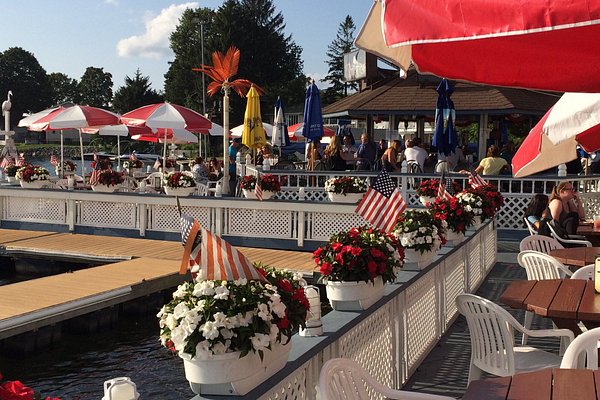Uncover underrated treasures among the best restaurants Lockhart.
Why Eating at Neighborhood Dining Establishments Supports Your Area and Thrills Your Palate
Eating at neighborhood dining establishments offers more than simply a meal; it serves as a crucial element in supporting community vitality and financial durability. What might this mean for the future of neighborhood dining and area connection?
Financial Impact of Neighborhood Dining

The financial impact of local dining extends much past the restaurant itself, affecting a wide variety of fields within the neighborhood. Neighborhood dining establishments play a pivotal role in boosting financial development by producing jobs, sustaining neighborhood providers, and adding to community profits. When consumers choose to dine at local establishments, they aid sustain work for cooks, servers, and upkeep personnel, therefore boosting the neighborhood work market.
In addition, neighborhood restaurants often resource active ingredients from close-by farms and producers, fostering a durable supply chain that profits various agricultural fields. This technique not just supports neighborhood economic climates however additionally motivates lasting farming techniques. Furthermore, the sales tax generated from these restaurants adds to vital public services, such as education and infrastructure, which even more improves neighborhood lifestyle.
Additionally, local eating establishments frequently cultivate a sense of area, drawing in citizens and site visitors alike, which can result in raised foot web traffic in surrounding companies. This interconnectivity amongst neighborhood business boosts economic resilience, producing a vibrant and lasting community ecosystem. Essentially, the assistance of neighborhood dining is a financial investment in the broader financial health of the location, promoting development and sustainability for future generations.
One-of-a-kind Culinary Experiences

Additionally, numerous local establishments embrace farm-to-table methods, emphasizing the significance of seasonal fruit and vegetables. Restaurants can savor the quality of components sourced from neighboring ranches, which not just boosts flavor however likewise cultivates a connection to the neighborhood landscape. This dedication to quality and area establishes the phase for distinctive culinary experiences that are typically missing in chain restaurants.
Moreover, regional chefs frequently try out combination cuisine, mixing diverse cooking traditions to produce interesting brand-new dishes. Such advancement not only entices the taste however also motivates daring eating, inviting patrons to expand their cooking horizons. Involving with regional restaurants permits restaurants to take pleasure in dishes that are not almost sustenance, but about the creativity and passion that specify the culinary world, making every eating experience genuinely unique and wonderful.
Strengthening Neighborhood Bonds
Dining at regional restaurants plays a crucial role in enhancing community bonds by promoting connections among homeowners. These establishments act as important celebration places where individuals can take part in meaningful conversations, share experiences, and develop long lasting memories. As patrons frequent the exact same regional spots, they cultivate a sense of familiarity and friendship, reinforcing social connections within the area.
In addition, neighborhood dining establishments usually show the distinct social fabric of their neighborhoods, showcasing local practices and cooking heritage. This event of local culture not only boosts neighborhood identification yet additionally encourages homeowners to take pride in their surroundings. By getting involved in the neighborhood dining scene, people add to a shared story that binds them together.
Area occasions held at restaurants, such as open mic nights, charity events, or food festivals, even more improve these connections. They supply possibilities for you can try here collaboration and engagement amongst diverse teams, cultivating inclusivity and understanding. As citizens gather to sustain local services, they simultaneously support one an additional, producing an interconnected network that enhances the area's strength.
Essentially, eating at regional restaurants is not simply regarding food; it is an enriching experience that fortifies community bonds and cultivates a dynamic, united local culture.
Sustaining Neighborhood Farmers and Producers

This method lowers transport expenses and discharges, promoting environmental sustainability while also boosting the flavor and top quality of the meals served. Seasonal menus, which highlight regional fruit and vegetables, enable restaurants to supply special cooking experiences that mirror the region's agricultural bounty.
Furthermore, sustaining neighborhood farmers helps protect conventional farming techniques and encourages biodiversity. It encourages small manufacturers, allowing them to flourish in a significantly industrialized food system. As local dining establishments pick to partner with these farmers, they help maintain a vivid farming community, guaranteeing that local food systems continue to be resistant.
Essentially, eating at regional dining establishments is not merely about enjoying a meal; it is a financial investment in the neighborhood economic situation and an affirmation of lasting methods. By selecting regional, diners play a vital function in nurturing their neighborhoods and sustaining the industrious people that cultivate their food.
Protecting Neighborhood Society and Heritage
Rooted in the customs of their areas, regional dining establishments act as crucial custodians of cultural heritage. By showcasing regional active ingredients and traditional cooking techniques, these facilities maintain the distinct tastes and culinary practices that specify local identification. Each dish narrates, reflecting historical influences and cultural narratives that have formed the neighborhood over generations.
Moreover, local restaurants frequently champion time-honored recipes passed down with households, making certain that special cultural techniques stay alive. This not just educates customers regarding you could try these out the community's heritage however additionally cultivates a sense of satisfaction and belonging among locals. The atmosphere, décor, and also songs in these establishments often echo the local culture, supplying an all natural experience that transcends mere dining.
Furthermore, local restaurants contribute to the preservation of language and languages, as menus and discussions frequently integrate local blog vernacular. By taking part in area events and events, these dining establishments enhance social bonds and promote cultural exchange. Fundamentally, dining at regional dining establishments is not merely a culinary experience; it is a possibility to engage with and support the rich tapestry of neighborhood culture and heritage, guaranteeing its continuity for future generations.
Conclusion
